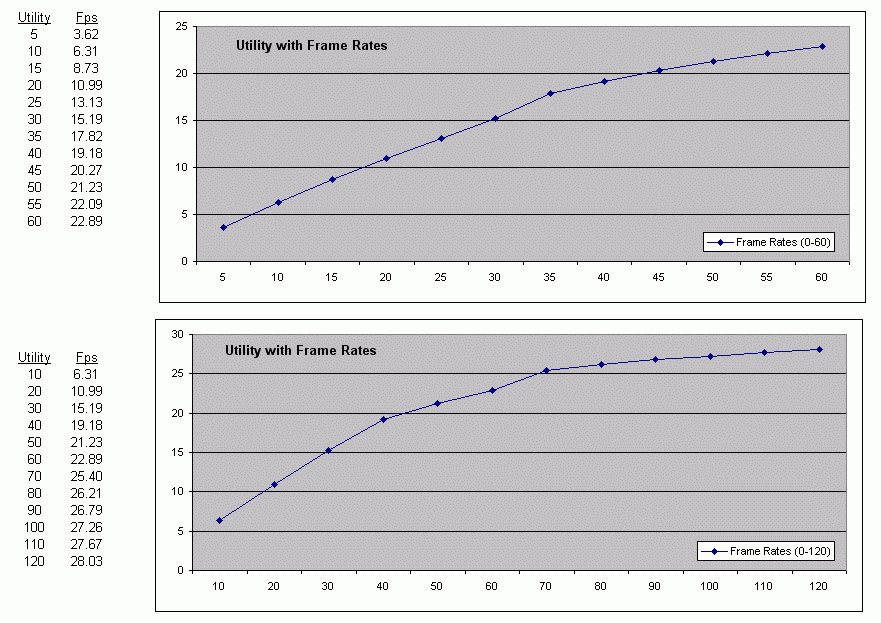This is a semi-scientific Utilitarian approach to the Frame Rates, trying to illustrate,
- Is higher frame better? If so, by how much?
- Does dimishing returns apply to frame rates?
- Do we benefit from a reasonably high frame rate (exp. 30) to a higher one (exp. 60)?
- Do we benefit from an already high frame rate (exp. 60) to an even higher one (exp. 120)?
etc...
Assumtions
a) Higher frame is always better. This is a weak assumption (weak is good!) and it usually holds although there are biological / technical cases where it may not hold.
b) Higher frame rate matters increasingly less (dimishing returns to scale, increasing sharply soon after).
c) The specific numbers for utility here are meaningless in their "absolute magnitudes". They are important only in their "relative and sequential values". So a value like 20 is meaningless on its own, although it is understood that it's worse than 21. Or an increase by point unit is a larger increase than one half point.
The summary
Frame rate matters most between 0-30 frames. It matters less between 30-60 frames. It still matters but dramatically less after 60 fps. The utility you get at 30 fps is barely doubled somewhat above 120 fps...

Playstation 5 vs XBox Series Market Share Estimates
Regional Analysis (only MS and Sony Consoles)
Europe => XB1 : 23-24 % vs PS4 : 76-77%
N. America => XB1 : 49-52% vs PS4 : 48-51%
Global => XB1 : 32-34% vs PS4 : 66-68%




























































